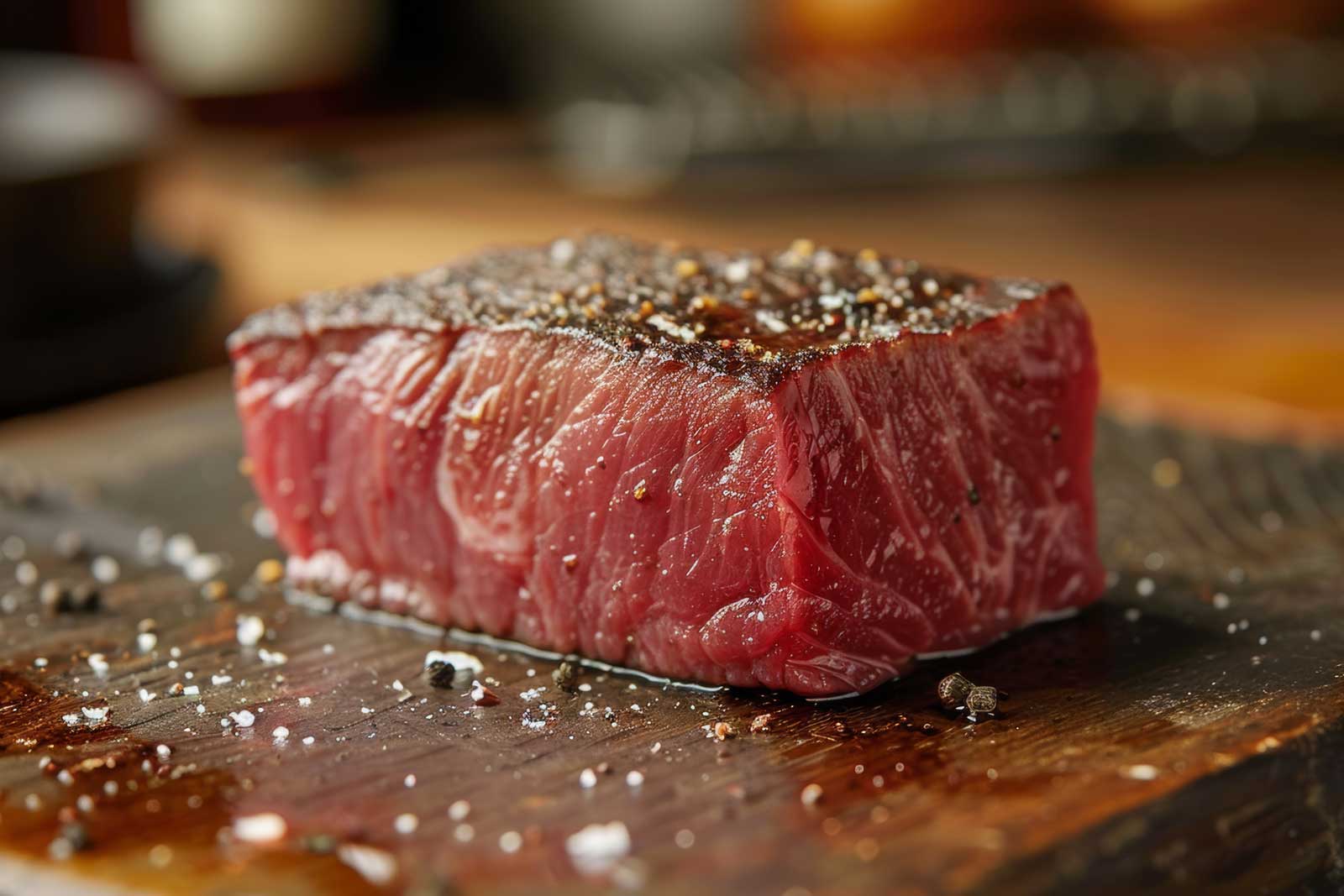Protein sources differ substantially in nutritional value and should not be compared on a simple per mass basis [Gwin et al. 2021; Adhikari et al. 2022; Connolly et al. 2023]. When protein quality is taken into account, protein is found to be deficient for the average adult in most countries of the world (gross protein, in contrast, would suggest sufficiency for most countries) [Moughan 2021]. Typically, animal source foods improve protein quality when compared to plant proteins [Wolfe et al. 2018; Soh et al. 2024]. Animal proteins are known to yield a higher anabolic muscle mass response, bringing in amino acids that may otherwise be in short supply (i.e., leucine, lysine, and methionine) [Berrazaga et al. 2019; van Vliet et al. 2019]. The intake of leucine has been shown to be particularly critical in that respect [Traylor et al. 2018]. In addition to amino acid limitations, the food matrix needs to be accounted for, as this defines protein digestibility. The reason why animal proteins tend to outperform plant proteins is thus the combined effect of differences in amino acid profiles and protein digestibility. This combined effect has been quantified in protein quality metrics (PDCAAS and DIAAS), as discussed below.
PDCAAS and DIAAS
True ileal digestibility scores for the dietary indispensable amino acids (DIAAS) are superior when quantifying protein value compared to single faecal crude protein digestibility ones (PDCAAS) [FAO 2011]. Moreover, PDCAAS does not assign additional nutritional value to proteins with high biological value, overestimates the nutritional value/protein digestibility of foods that contain antinutrients, and overestimates the protein digestibility of foods with low digestibility when supplemented with the corresponding limiting AA [Tome et al. 2024]. For most ASFs, DIAAS values are ≥1, exceeding those of plant proteins (legumes: 0.6; cereals: 0.3-0.5), only approximated by soy (0.8-0.9) [Wolfe et al. 2018; Burd et al. 2019; Adhikari et al. 2022]. In plants, digestibility is reduced due to structural resistance, fibre, and anti-nutritional factors, which can be (partially) attenuated through processing [Wolfe et al. 2018; Almeida Sá et al. 2020]. For peas, for instance, the DIAAS increases from 0.6 in cooked peas to 0.8 in pea protein isolate [Rutherfurd et al. 2015]. For soy, DIAAS after processing and post-processing can either increase (e.g., for soy milk and soy concentrate) or decrease (e.g., for tofu and soy flour) [van den Berg et al. 2022].
With DIAAS rather than PDCAAS, nuts, seeds, tofu, and pulses (except chickpeas) cannot claim to be a 'good source' (DIAAS > 0.75) of protein [Marinangeli & House 2017]. To meet the requirements for all essential amino acids, the recommended protein intake should account for the DIAAS of the diet if the value is <100% (1.0). Since a plant-based diet yields a DIAAS of about 0.65 on average [Wolfe et al. 2018], a minimum amount of 0.8 g/kg/d would translate into a required intake of 1.2 g/kg/d to meet all essential amino acid needs, while a level of 1.5 g/kg/d for healthy aging would correspond with 2.3 g/kg/d. Indeed, when protein intake is 0.6-0.8 g/kg/d, vegan and lacto-ovo vegetarian diets are more likely to be deficient in essential amino acids, especially lysine [Tallman et al. 2023]. For strict vegan diets, consuming the RDA (0.8 g/kg/d) is inadequate to produce nitrogen balance in men [Bartholomae & Johnston 2023]. Also, meeting the same protein target with plant options comes with caloric intakes that are more elevated (often double or triple, even with beans and nuts) [Wolfe et al. 2018].
Similarly, the use of plant-based imitation foods fails to achieve the same response per unit of food as the animal-sourced variants they are trying to replace. About twice the amount of soy-based meat alternatives needs to be consumed to obtain the same anabolic effect as beef patty [Church et al. 2024]. In a Swiss sample, about 60% of the vegans did not reach the daily protein recommendation of 1 g/kg/d, which was partially ascribed to high quantities of low-protein soy drinks [Bez et al. 2024].
Older adults
Older adults in particular benefit from sufficiently high intakes of animal protein. For older adults in the UK, higher shares of animal protein have been associated with a slower atrophy rate in the hippocampus in the UK [Cui et al. 2024]. In Japan, a higher intake of animal protein has been inversely associated with all-cause mortality, independent of muscle mass [Kurata et al. 2023]. Muscles mass effects are, however, also critically important. When providing whole-food meal options, those containing beef resulted in enhanced muscle protein synthesis rates in older adults than isonitrogenous variants that were plant-based [Pinckaers et al. 2023]. On average, consuming vegetarian diets parallels lower muscle mass and hand grip strength, when compared to omnivorous diets [Bartholomae et al. 2022].
Whereas meeting the protein target for older adults is feasible with meat-based meals, this is more difficult with vegetarian options, even when improving the flavour with spices [Peters et al. 2023]. Plant-based strategies to stimulate muscle protein synthesis are possible, but may require amino acid fortification, ingestion of multiple protein sources, or higher intake [Gorissen et al. 2016]. Other authors contend that meeting sufficient protein levels with plant-based options should not be problematic, albeit with more uncertainty in the case of older adults and provided that the diets are well-formulated [Mariotti & Gardner 2019].
To specifically take into account personalized requirements based on age or metabolic conditions, such as increased leucine needs for older adults, the Essential Amino Acid 9 (EAA-9) score has been developed as an alternative to DIAAS and PDCAAS [Forester et al. 2023]. As such, EAA-9 scores can be used to ensure that dietary recommendations are met for each essential amino acid, in the context of precision nutrition.
Animal protein and nutrient adequacy
Besides being of nutritional relevance as such, 'animal protein' is also a proxy for the supply of highly bioavailable priority micronutrients [see elsewhere]. In a 12-w randomized controlled trial, diets with only 30% of the protein coming from animals led to lower vitamin B12 intake and status compared to a 50% share, which in turn was lower than for a 70% share; iodine intake and status were also lower in diets set at 30-50% of animal protein compared to 70% [Pellinen et al. 2022]. Modelling suggests that animal protein should be about 50% of total protein to avoid dietary inadequacy. A 40% contribution could be suitable for some populations, but 30% would probably be too low [Vieux et al. 2022; Tome et al. 2024]. As a reference, the contribution of animal protein to total protein in global diets is currently 10-30%, 20-40% 30-60%, and 50-70% for most low-, lower-middle-, upper-middle-, and high-income countries, respectively [Drewnowski 2024; see elsewhere]. Finally, reaching protein adequacy on a vegan diet may also lead to a higher intake of ultra-processed foods [Leitão et al. 2024], which are often poor in nutritional content other than protein [see elsewhere].

